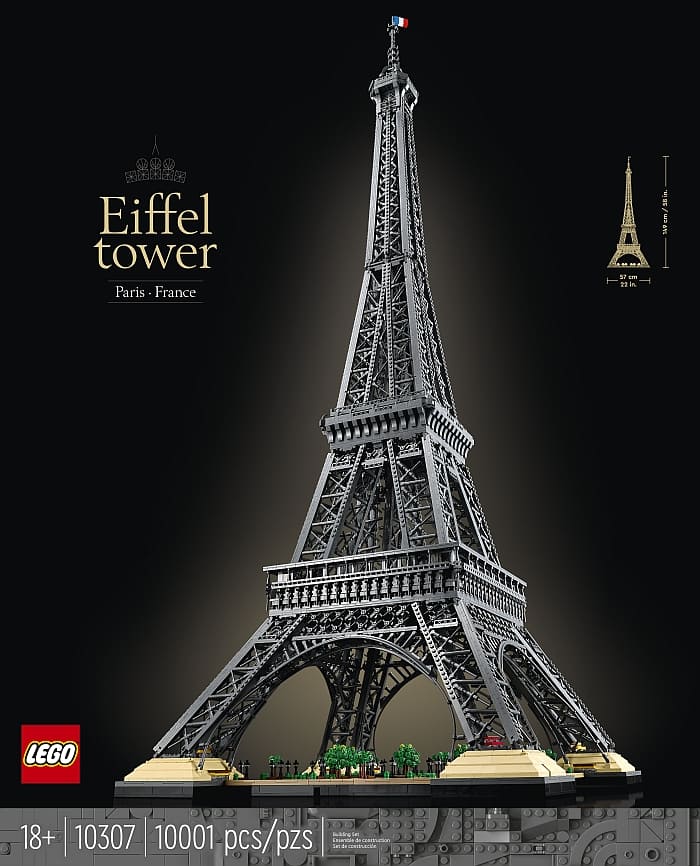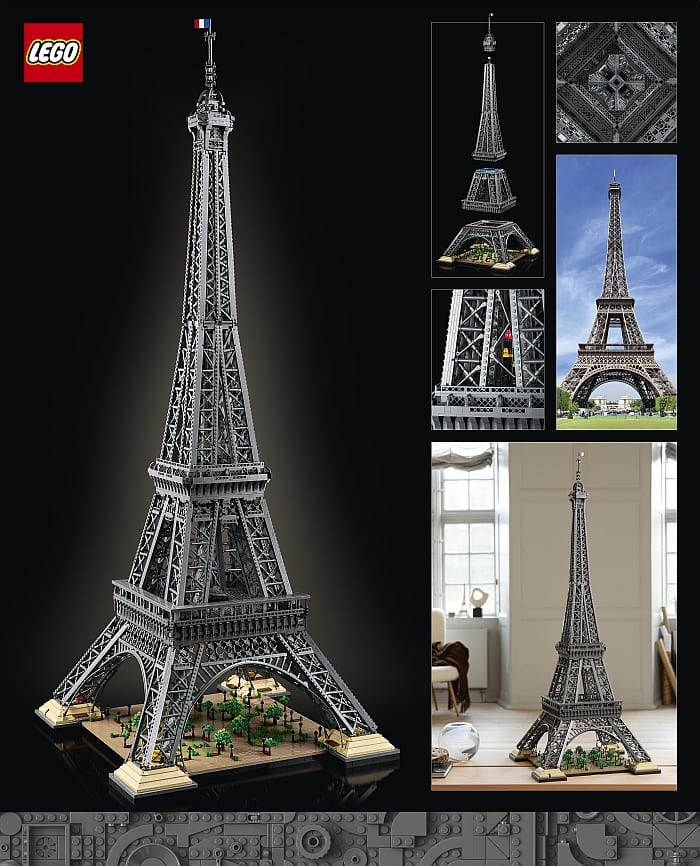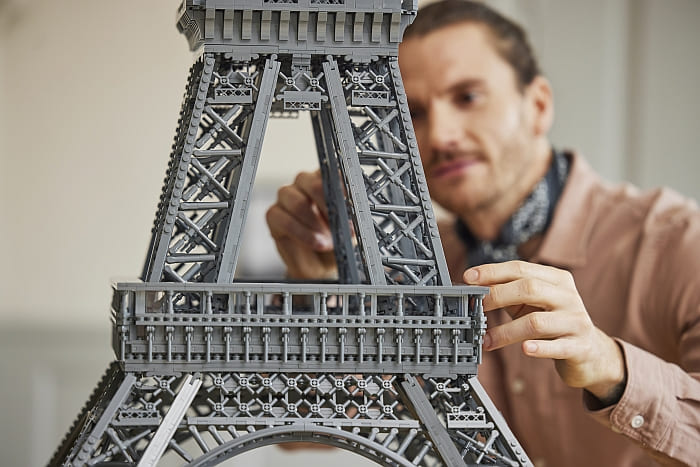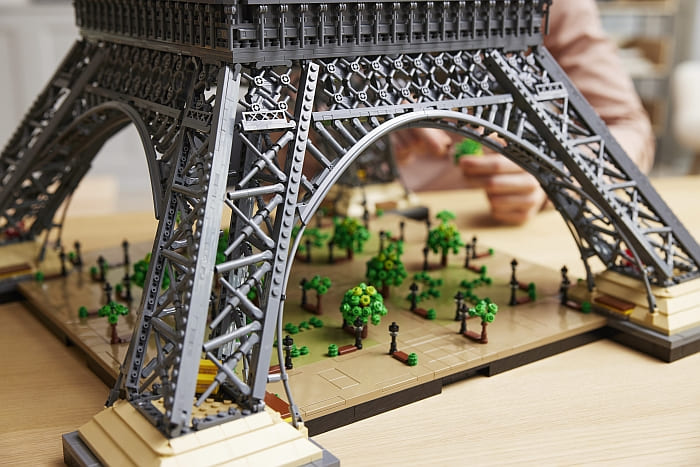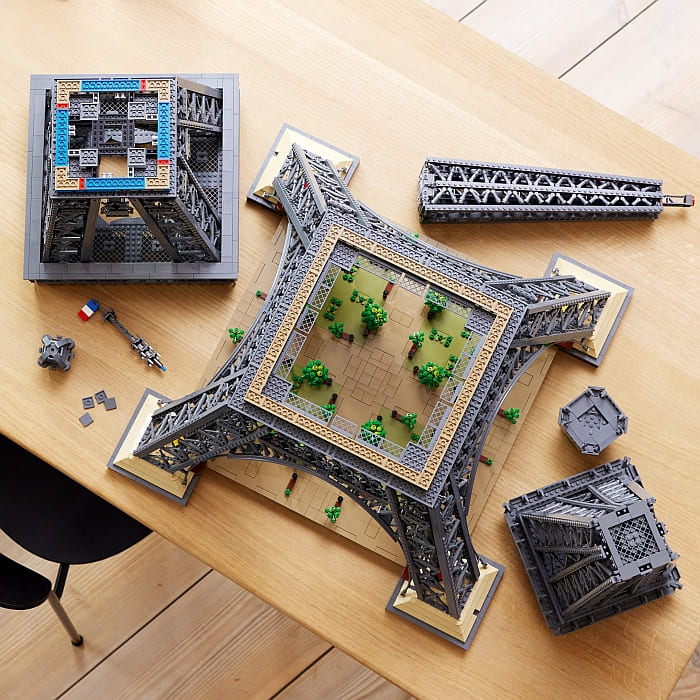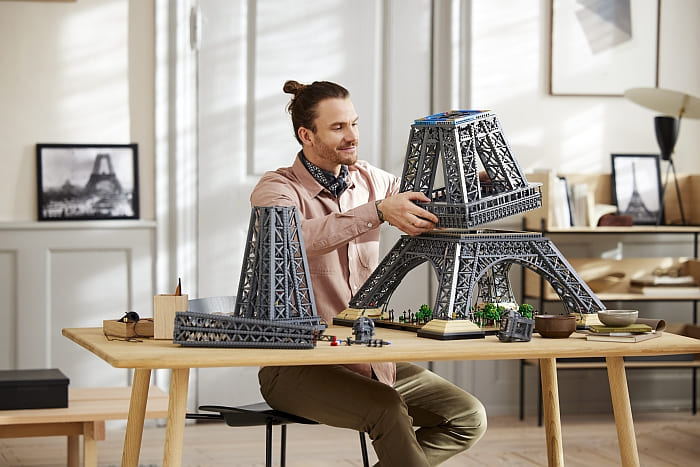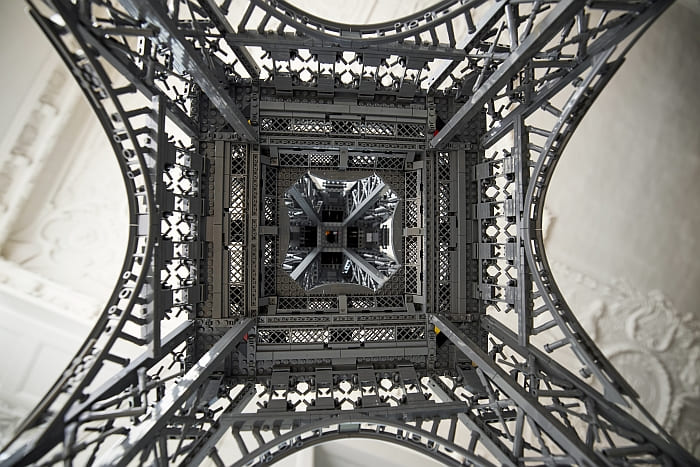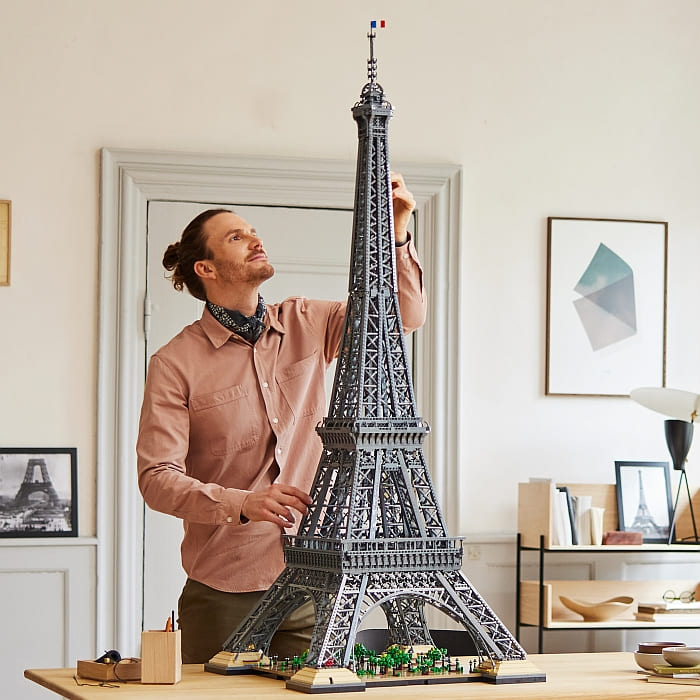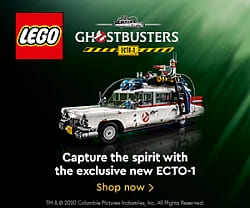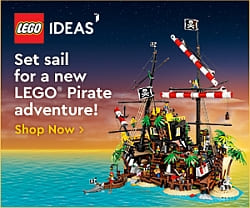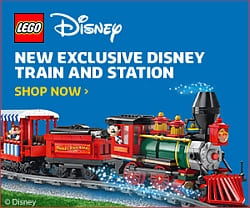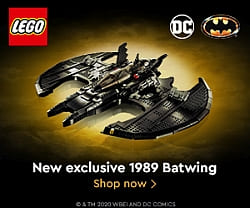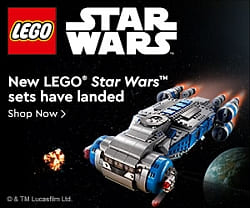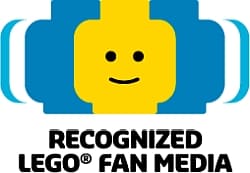(Written by William)
In the past few months, we have been discussing several of the LEGO Ideas projects that were released via the BrickLink Designed Program. So far, we reviewed the #910016 LEGO Sheriff’s Safe designed by Il Buono (see: Brick Breakdown: LEGO BrickLink Set – Sheriff’s Safe), the #910028 LEGO Pursuit of Flight by JKBrickWorks (see: Brick Breakdown: LEGO BrickLink Set – Pursuit of Flight), the #910001 LEGO Castle in the Forest by povoq (see: Brick Breakdown: LEGO BrickLink Set – Castle in the Forest), and the #910010 LEGO Great Fishing Boat by EdouardClo (see: Brick Breakdown: LEGO BrickLink Set – Fishing Boat). Today, we will discuss the #910015 LEGO Clockwork Aquarium by Farquar.
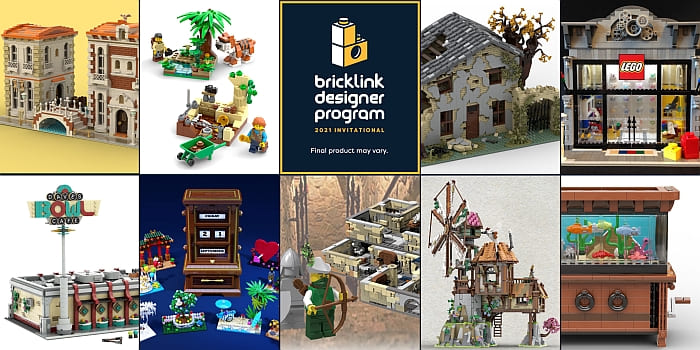
I must admit, after building sets from the first wave of the Bricklink Designer Program (see links to my previous reviews at the end of this post), I was a bit worried about the instructions for the #910015 LEGO Clockwork Aquarium. It seemed as if the LEGO team did not really help the creators of each project with this process. So, I crossed my fingers and hoped for the best when I set out to build this project from the second wave of the program.
I’m happy to report these instructions went above and beyond. They were easy to follow and made sense – which is very important since this model had working mechanisms. I was also surprised to find that it is a 4-in-1 model, and it comes with all the elements to build all four versions. (The 4-in-1 aspect comes into play by swapping in and out different sections of the model.) In fact, you can actually mix and match these elements to produce even more options. This was my favorite feature of the project, but there is more!
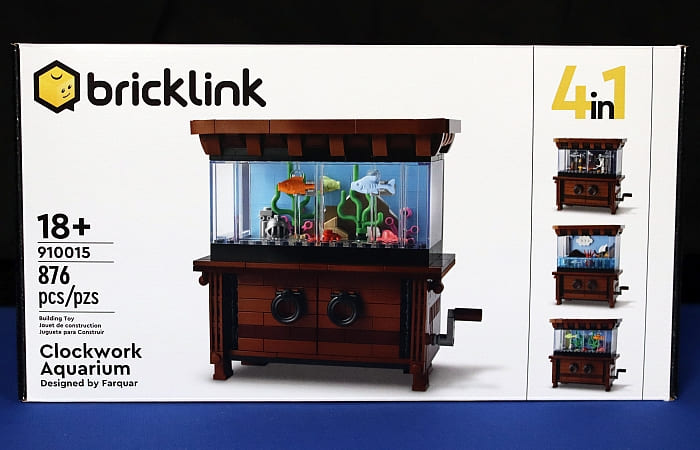
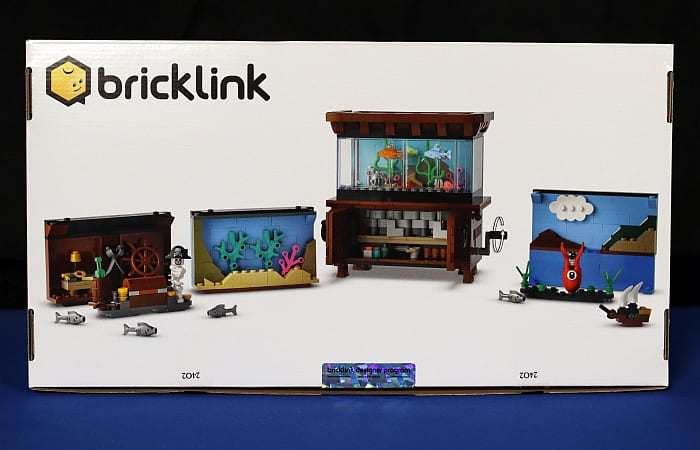
Another interesting feature I’ve never seen before is the use of elements that are made to intentionally get caught by a working mechanism. This allows for slight infrequent movement of different elements in the scene to come to life. But let’s first take a look at the principles of the 4-in-1 model.
STANDARDIZING COMPONENTS WITH LEGO
It’s no mystery that LEGO fans really like modular designs. After all, the entire LEGO system is built on this principle. However, one of the features of modular elements that really resonates with fans is the ease involved in making changes.

In the LEGO Creator line, we often see 2-in-1 and 3-in-1 models that allow a builder to use all the same parts to experience something different. However, with these sets, you usually have to take the entire model apart in order to have the parts needed to create the various models. Are the parts modular? Yes, of course, but these sets don’t really tap into the benefits standardized components offer.
The designer has taken a very interesting approach to modularity in the Clockwork Aquarium. They managed to make it so that you have all the parts necessary to make the interior mechanized displays as well as the four backdrops they came up with. They did this by creating standardized components.
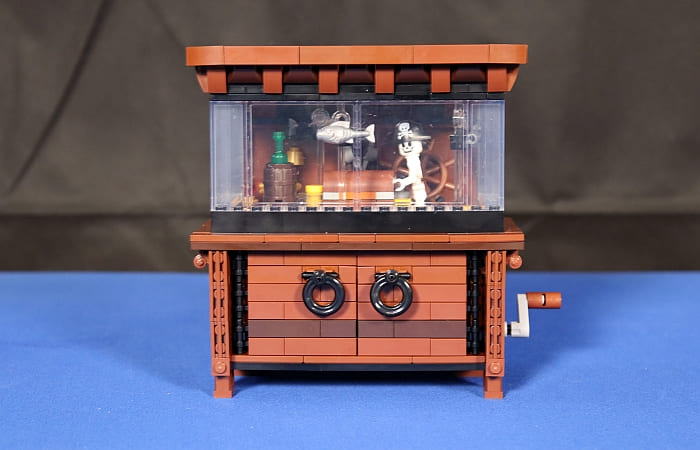

Each interior mechanism is built the same size and can interact with the working elements in the same way. For instance, the crank that acts like a cam to move the middle crab, chest, or kraken, all sit on an axle that is dropped into a well created by stacked lift-arms. This means they can each use different axles on their working end while still being powered by the same device on the other end.
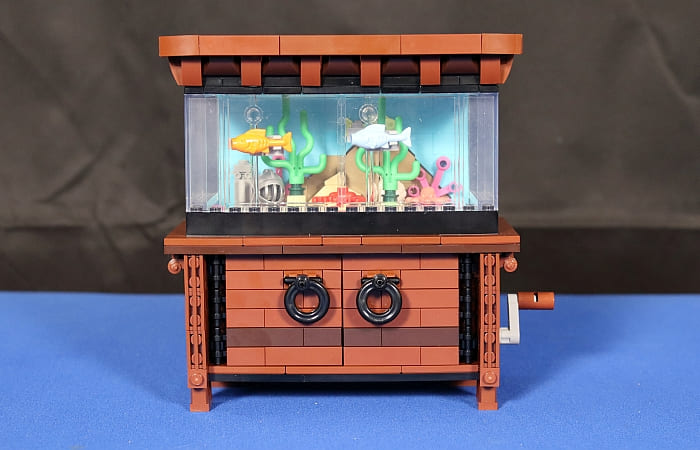
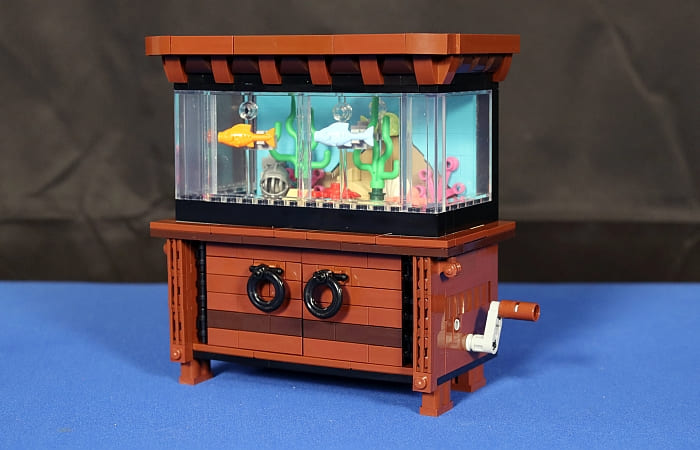
The backdrops are also interesting. They each need, at minimum, two rows of studs to connect into the cabinet. There are studs located on the gearbox portion of the aquarium as well as near the top and left which secure it into the glass. The thing is, some backdrops need more space. In these cases, the designer lets these backdrops be thicker. This works because standards could still be followed as long as they filled the same space.
The only time serious rebuilding even takes place is when the glass is reconfigured to be partially open in the front. This was done to play around with the concept of breaking the surface of the water. But even this change still conforms with the original shape the glass sections fill in all the other builds.
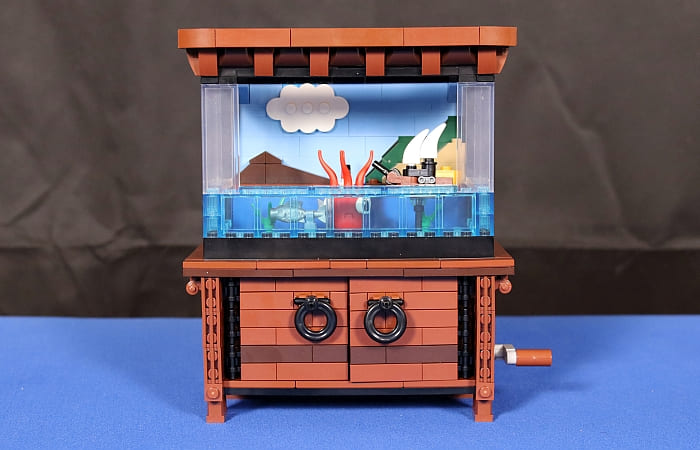
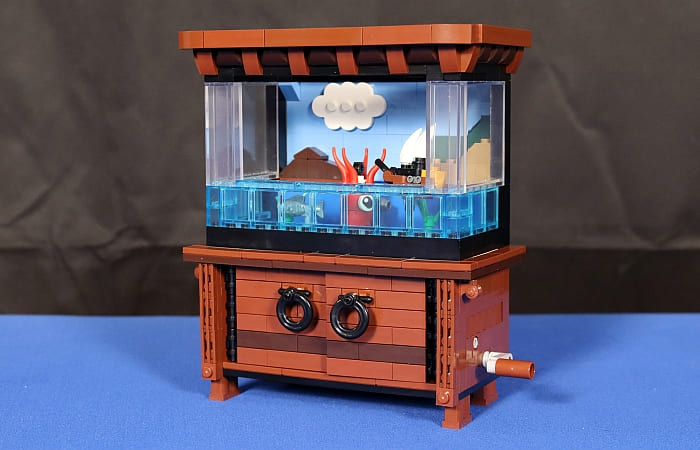
Generally, this technique is all about identifying a regular shape that can be easily removed without compromising structural integrity. The designer of this set achieves this by having a solid base, the gearbox/lower cabinet, and the upper trim of the aquarium. All of these together act as stabilizing elements to hold together the interchangeable components. And that is the simplicity of this technique. As long as each component you build is itself held together well, then you can just treat them like oversized pieces or bricks and thus gain a ton of interesting variety.
LEGO CLOCKWORK AQUARIUM – BRICK-BUILT BELT
LEGO bricks aren’t known for being the most flexible of things. Sure, we have strings and chains that are useful in certain instances, but they may have difficulty holding up to heavy use. Normally, when I need something to act as a belt, I either use chainlinks or treads. These are LEGO Technic solutions to powering something with a belt-drive. Even still, I’ve had these snap on me and cause quite a mess. So, I was amazed to see a brick-built belt in this model.
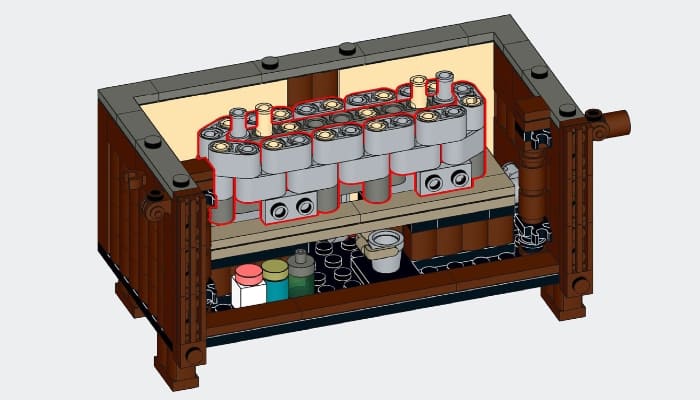
The build itself is simple. It utilizes 1×2 lift-arms, pins, half-sleeves, and modified plates with pinholes. The little lift-arms are linked together with the pins. Every other pin has a long pin that sticks below the chain you are making. The long pin that sticks out will either get a half-sleeve or a modified plate with a pinhole underneath. Once the belt is built to the proper length, it is connected to the beginning of the chain to form a full loop.
In order to power this belt, the half-sleeves at the bottom will act as spokes to be pulled and pushed. Meanwhile, the modified plates give a bit of build space so that you can actually use the belt for whatever it is you are trying to power.
This elegant design is remarkable in a couple of ways. Not only is it fairly compact – meaning, it can fit in some fairly tight spaces – but it is the sturdiest belt I’ve seen used. This means you can really abuse this thing and not have it buckle under the pressure you put it under. If you look at any one part of this model, I recommend giving this a closer look.
LEGO CLOCKWORK AQUARIUM – FINAL THOUGHTS
I honestly was a bit worried after my experiences with the first wave of Bricklink Designer Program projects. I found the instructions for many of the first models to be a bit chaotic. Plus, the stability of some of the models was rather suspect. But the designer of this set delivered above and beyond. The instructions are very well put together and clean. This is especially appreciated as clean instructions are crucial for a model featuring mechanical working parts.
No matter which of the four designs on offer I choose, I like them all. Plus, I can take it one step further and mix and match the elements to get even more variety. And it still shocks me that there is very little I need to rebuild in order to enjoy each and every scene.
I also like that although this project is complex, it is smaller than most of the other ones. This means that, even though this is a rare collectible, those who couldn’t get the original set won’t have a huge issue getting the parts to build it. And lastly, it just looks great. I hope every future project in the Bricklink Designer Program will be this good. If you’re curious to check out the building experience yourself, you can use the LEGO Instructions app to find the set, or download (and even print out) the PDF version. You can access both via this BrickLink Designed Program page.
What do you think? Have you gotten any of the BrickLink Designer Program sets? Which one is your favorite? And what do you think of the Clockwork Aquarium? Feel free to share your thoughts and discuss in the comment section below!
And you might also like to check out the following related posts:
